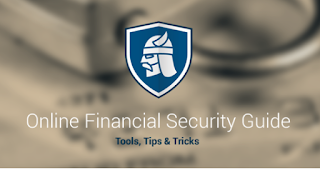Heimdal Online Security - 15 Steps to Maximize your Financial Data Protection
We use computers to pay bills, shop online, chat and even
keep in touch with friends on social media platforms. You might not realize it,
but this makes us vulnerable.
Because we willingly broadcast over the Internet valuable
details, such as our credit card information or bank account credentials –
information usually needed by cyber criminals – we can never be too careful
when securing our financial transactions or personal information.
A 2016 report from the PricewaterhouseCoopers indicates that cybercrime
is the “2nd most reported economic crime, affecting 32% of organizations.” And
the same study reveals another cause for concern, apart from the economic
impact:
“The insidious nature of this threat is such that of the 56%
who say they are not victims, many have likely been compromised without knowing
it."
The data clearly shows that cybercrime affects individuals and
global economic growth. Cyber-attacks on financial institutions or with
financial consequences for users like you and me are putting financial assets
at risk. Consequently, financial data protection should be a strong concern for
anyone.
So is there a way to for our online activities to remain
private and safe from cybercriminals?
Definitely! Here are a
few best practices that will keep your system protected:
1. Check the link
before you click it
Pay attention to the links you want to access. To make sure
you are not deceived; simply hover the mouse cursor over the link to see if you
are directed to a legitimate location.
If you were supposed to reach your favorite news website,
such as “www.cnn.com”, but the link indicates “hfieo88.net“, then you should
resist the urge of clicking the link. Hyperlinking is a common practice in
phishing attacks and it’s always best to double check embedded URLs.
Most of us use shortening services for their links, such as
goo.gl or tinyurl. But in some cases an unknown link may send you to a
malicious site that can install malware on the system. So, how can you know
where you’ll arrive if you click it?
To make sure you are about to access the right online
destination, use a free tool such as Redirect Detective. This tool will allow
you to see the complete path of a redirected link.
Alternatively, you can also check the suspicious links using
a reliable URL checker, such as VirusTotal.
2. Check the file
before you click it
We all know malware is everywhere. But how can we make sure a
file (or an executable file) we just downloaded is what it’s pretending to be?
Can we tell the difference between a safe file and a malicious one?
An important step for everyone is to use a browser which
integrates a reputation-based technology. This technology uses a cloud scoring
system to analyze each application downloaded and where it comes from. As a
result of the analysis, websites that distribute malicious software – not yet
detected by existing defense mechanisms – are more easily blocked. For more
details, you can access the following article.
To make sure you are not running a malicious executable file
(which may download a Trojan virus on your system), use VirusTotal, which
analyzes suspicious files on multiple antivirus solutions.
3. Use secure websites
to run financial transactions
Financial operations and transactions should be given high
scrutiny, as they hold the key for cyber criminals to cashing out your life’s
savings.
Here’s how to make sure
you visit a secure website:
1.
Look
to the left of the web address and find the “Lock” icon. This indicates that
you are visiting an encrypted and/or a verified website.
2.
Make
sure the web address starts with “https://”. The “s” comes from “secure socket
layer” and it indicates you are connected to a website where data, which is
sent and received, is encrypted.
4. Set strong passwords
for your accounts
Your passwords should contain around 20 characters. Don’t
forget to combine upper and lowercase letters, numbers, and symbols. Don’t use
the same password for all your accounts. Make a habit of changing your main
passwords every 30 days. Even if you are hacked, having different passwords for
each account will help you limit a potential loss.
For more information on how to set strong passwords and
manage them safely, see our step by step guide on password security. This
includes details on how to use a strong and secure password manager like
LastPass or Sticky Password.
5. Use two-factor authentication
This is one of the best ways to ensure your online accounts
or your email inbox are not accessed by anyone else but you.
This option means that, besides entering your credentials,
you will be required to enter a one-time code sent to your phone. Use this
method to protect confidential information from social media accounts, such as
Facebook, Twitter or valuable data from email accounts.
Read More About 15
Steps to Maximize your Financial Data Protection

Comments
Post a Comment